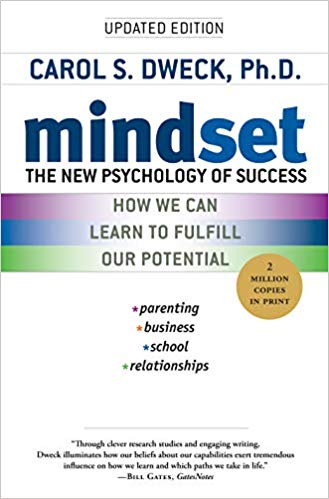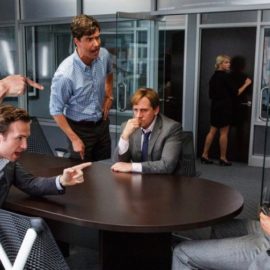

This article is an excerpt from the Shortform summary of "Mindset" by Carol Dweck. Shortform has the world's best summaries of books you should be reading.
Like this article? Sign up for a free trial here .
What is a fixed mindset? What are fixed mindset examples in business, sports, and school?
A fixed mindset is the belief that your intelligence and abilities are unchangeable. The term was popularized in Carol Dweck’s Mindset.
We’ll cover 6 fixed mindset examples and discuss why fixed mindsets hold you back in sports, work, and your personal life.
What Is a Fixed Mindset?
When you have a fixed mindset, you believe your abilities are unchangeable. You were born with certain traits and a certain amount of intelligence and that’s that. Many people are trained in this mindset from an early age — for instance, by a teacher who believed your IQ determines everything: You’re either smart or you’re dumb; you can learn or you can’t.
When you view your abilities as unchangeable, you feel you must constantly prove yourself. If people get only a set amount of intelligence and a certain character, you want to prove you have a lot, although you secretly worry you were shortchanged. You don’t want to look stupid or fail. You feel you’re being judged or rated in every situation and must measure up. Children inculcated with this mindset often fear losing their parents’ or teachers’ approval and love if they fail.
Fixed Mindset Example #1
Here’s a fixed mindset example. Imagine you’re a young adult who is having a bad day. You receive a C+ on a paper for an important class. When you return to your car at the end of the day, you find a parking ticket. When you call a friend for sympathy, she seems to brush off your tale of woe. The author presented her students with this scenario and asked how they’d react.
Those with a fixed mindset said they’d feel like a failure and would interpret the three events as confirmation that they were worthless, others were out to get them, and no one cared about them. They said they’d react by not putting so much effort into the next class assignment, breaking something to let off steam, or withdrawing and getting drunk. Although the events were hardly earth-shattering, they led to feelings of failure and paralysis in the students with fixed mindsets.
In contrast, the students with growth mindsets shrugged off the setbacks, saying they’d work harder in the class and be more careful about where they parked. Regarding the friend’s rebuff, they suggested the friend could be having a bad day or might be preoccupied with something. The students with growth mindsets didn’t label themselves negatively and withdraw. They chose action — for instance, studying differently, paying the parking ticket, and being more careful.
Fixed Mindsets and Entitlement
A fixed-mindset person’s need to believe they’re smart can evolve into a sense of entitlement or specialness. Not only are they smart, but they’re also smarter or more talented than anyone else. Their need for validation is constant. The self-esteem movement bolsters this belief, for instance by encouraging you to remember your specialness with daily affirmations.
Fixed Mindset Example #2
Tennis player John McEnroe is an example of both an entitled attitude and the pitfalls of a fixed mindset. He believed only in talent. Because he didn’t learn, he didn’t improve or grow as a player.
In terms of feeling entitled, McEnroe acknowledged that he needed to be the center of attention. He expected people to cater to him. Further, he believed that because he was better than others, he had a right to abuse them. He often blew up at people over small things, like the coarseness of the sawdust provided to him at courtside for drying his hands. This is a fixed mindset example.
In contrast, basketball player Michael Jordan was growth-minded. He found public admiration embarrassing because he didn’t consider himself to be better than others — he’d developed his skills by working at them and always had room to improve.
Character Counts
Naturals do exist in sports, but for some talented athletes with fixed mindsets, like Billy Beane and John McEnroe, talent can be a drawback. They become enamored with their superior ability and never stretch themselves or learn to work and handle failure. They don’t develop character, which is the ability to persevere despite challenges that grows from mindset.
Fixed Mindset Example #3
A fixed mindset example is Pedro Martinez, a pitcher with the Boston Red Sox, who memorably demonstrated his lack of character by throwing a tantrum in game 3 of the American League playoffs against the New York Yankees in 2003. Martinez, who was the team’s hope, pitched well at first, then started falling behind and acting out because he couldn’t cope. He hit a batter with a ball, threatened the Yankees catcher, then knocked down the 72-year-old Yankees coach. The Yankees won the game and the playoff.
Fixed-Mindset Leaders: Self-Proclaimed Heroes
In Jim Collins’ study of great companies in his book Good to Great, he found that the average companies that he included for comparison typically had CEOs with fixed mindsets. Fixed-mindset CEOs believed they were geniuses who didn’t need a strong executive team, just underlings to implement their ideas. These CEOs needed to be the big fish and to feel superior to everyone else.
They were concerned with looking superior and enhancing their reputations. Two-thirds had huge egos that held their company back or led to its failure.
Here’s a set of fixed mindset examples of CEOs whose fixed mindsets caused them to sacrifice their companies for their egos.
Fixed Mindset Example #4: Lee Iacocca of Chrysler
Lee Iacocca was tapped to turn Chrysler around in the 1980s. He’d been fired by Henry Ford II, which left him angry and determined to prove himself through saving Chrysler. In his first few years, he made good hires, introduced new car models, and sought bailout loans. In his autobiography, he bragged that he was a hero.
However, Chrysler soon got into trouble again, while Iacocca focused on polishing his image. He spent money on things that would boost Chrysler’s stock to impress Wall Street instead of investing in new car designs and manufacturing efficiencies. He got rid of ambitious, intelligent people he felt threatened by.
Rather than responding to Japan’s innovative new cars with better ones, he made excuses and demanded the U.S. retaliate with tariffs. He spent lavishly on a corporate suite while morale in the company plummeted. The board finally grew fed up and got rid of him.
Fixed Mindset Example #5: Albert Dunlap of Scott Paper
Albert Dunlap considered himself a superstar who saved dying companies, such as Scott Paper. He compared himself to Michael Jordan and Bruce Springsteen in star power. His fixed mindset developed in childhood when his family was poor and he felt the need to prove his worth. In his career, he used shareholder profits to do that. This short-term goal was his only measure of success. He had no interest in strengthening companies for the long term, only in boosting the stock enough to sell them for a profit.
After taking over Sunbeam in 1996, he fired 6,000 people and cut most stores. But in a sense, he was too successful — stock prices rose so much that the company was too expensive to sell. So he was stuck with running it. Instead of working hard and learning, he inflated revenue numbers, fired critics, and covered up the real numbers. In less than two years, the company failed and he was ousted.
Fixed Mindset Example #6: Steve Case and Jerry Levin of AOL Time Warner
What happens when two superstar CEOs with fixed mindsets combine their companies? Steve Case of AOL and Jerry Levin of Time Warner both felt superior, liked to intimidate, took others’ credit, refused to hear complaints, and fired critics. When they merged their companies, AOL was near ruin, but instead of working together to salvage it, they competed for power. Levin failed first and Case refused to work with the new CEO because he didn’t want to share power and credit — he’d rather let the company fail. When he finally was forced to resign, he denied responsibility for any problems. By the end of 2002, AOL Time Warner had lost nearly $100 billion in market value, the largest annual loss in U.S. history.
———End of Preview———

Like what you just read? Read the rest of the world's best summary of "Mindset" at Shortform . Learn the book's critical concepts in 20 minutes or less .
Here's what you'll find in our full Mindset summary :
- The difference between a growth and a fixed mindset
- How a fixed mindset keeps you back throughout your life: education, relationships, and career
- The 7 key ways to build a growth mindset for yourself






